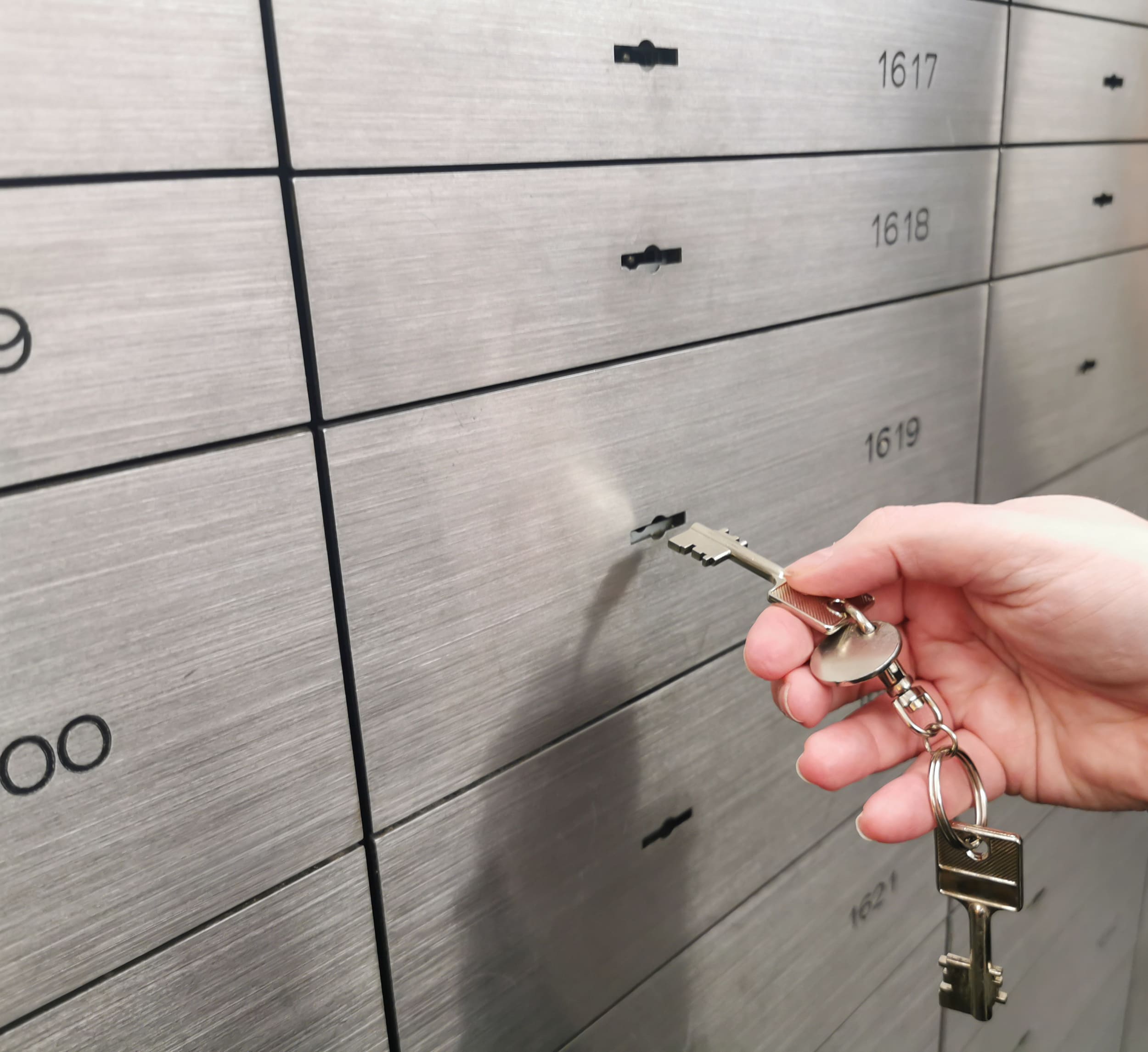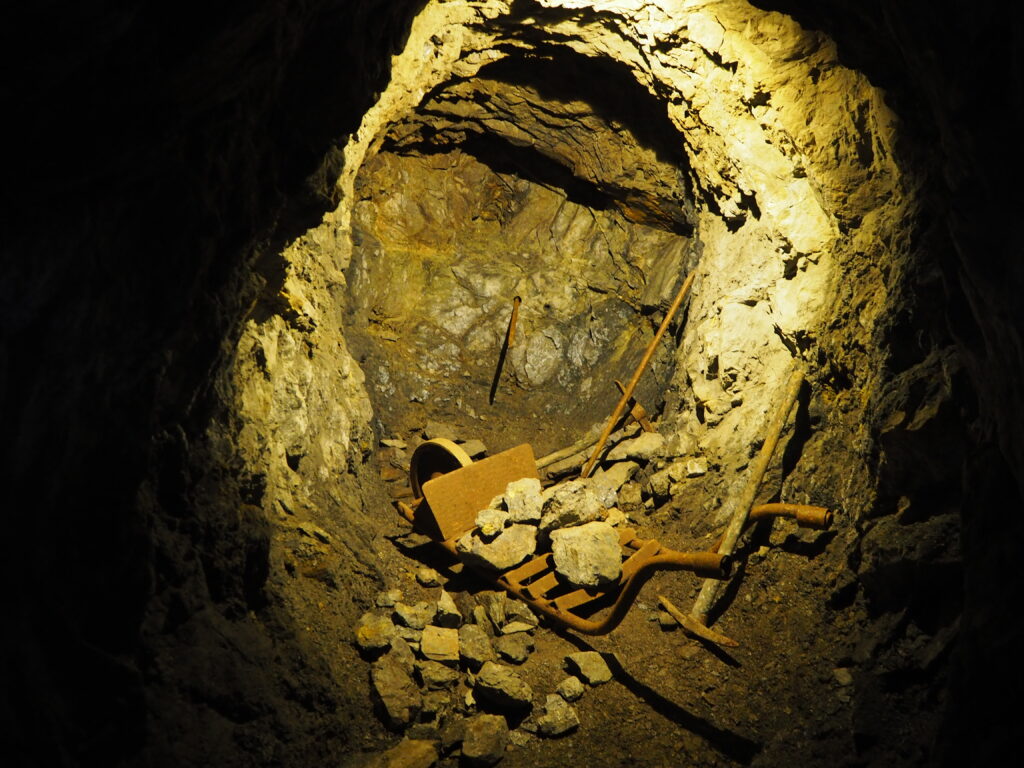Safes for the Home Are Often Inadequate or Dear
Additional information > Prevailing conditions for value storage in Switzerland and Liechtenstein > Safes for the Home Are Often Inadequate or Dear
In order for home safes to be secure, they need to be certified. Most of the time, therefore, storing valuables in private high-security vaults is more cost-effective
Anyone who owns valuable jewellery, important documents or investment gold should be careful to store these valuables as securely as possible. Although it is possible to rent a safe deposit box from a banking establishment, this way forward is unattractive for many people. They prefer to hide their items within their own four walls or to have a safe installed. There are many models suited to the needs of individuals, from furniture safes to wall safes, as well as larger security safes. However, some home safes are so small that they don’t even accommodate a notebook – something they have in common with many classic hotel room safes. However, regardless of the volume they are capable of holding, the resilience of a safe is the most important factor in the event of a break-in. This is, in part, because not every home contents insurance policy would cover the losses from a home safe. In particular, investors should, therefore, opt for an alternative means of storing valuables, such as in a privately managed vault facility.
The home safe market has a wide range of products designed to offer suitable solutions in your own living space. The acquisition and installation costs are just as varied, too. Simple furniture safes are currently available for less than 100 Swiss francs (90€, 80£, 100$). For this price, users can not expect to enjoy the highest levels of storage capacity or theft protection. According to reports from the police, such safes are often simply taken away in the event of a break-in. Tests have shown that even models mounted onto concrete walls can be removed within a minute or two. Indeed, even heavy tools are not required for this to occur. In many cases, a simple screwdriver or a crowbar is sufficient to dislodge them.
Security Certification and Insurance Protection
The entry-level safe is the usual single-walled back type which is common in this price range. On the other hand, multi-walled safes that are firmly anchored in the floor provide significantly more resistance to attempts from burglars. The same applies to larger and, therefore, heavier safe cabinets. For these safes, however, the cost of purchasing starts off at around the CHF 2,000 mark for something that would provide 50 litres of storage space and a weight of 200 kilos. Taking it with you would not be a feasible option due to the greater weight of such a safe. Instead, the solid construction constitutes the decisive security factor as well as how easy, or otherwise, it might be to crack safes of this quality. It does not matter whether the product in question happens to be a key safe or a safe with an electronic lock. While simple safes can be broken open within a few minutes, higher quality models can withstand attempted entry for much longer. Anything that takes more than ten minutes to get into will be of no interest to burglars.
By way of information, the various safe classes run from 0 to 6 according to European ECB-S and VdS certification. The number tells you how long it would take to open a safe forcibly without a key or a code. While class 0 offers little resistance, level 6 offers the greatest available safeguards against a break-in. A safe should, therefore, be of class S2 or S3 at a minimum. Household contents insurance usually also requires this standard, or higher, so that payouts for any stolen content can be claimed for at all. A look at your own policy will provide more information in this regard. Nevertheless, the rule generally means that the greater the security level, the higher the possible insurable sum can be. Depending on the provider, this can be up to CHF 50,000 for an S2 certified safe and up to CHF 150,000 for an S3. These claimable amounts can be further increased by the professional installation of an alarm system. Of course, this would result in follow-on costs for the activation of the alarm system by a security service for it to be considered as a part of the insurance policy.
Fire Protection, Delivery and Assembly
In addition to the break-in security classes of safes, fire protection should also be taken into account where necessary. This is particularly important if essential documents are to be kept in a safe. The relevant EN code provides information about the level of fire protection offered by a safe and the length of time the interior can withstand a blaze outside. Depending on the product concerned, this could be anything from 30 to 120 minutes.
It is already clear that the cost of a domestic safe is likely to be much more expensive than expected. And yet, there are additional costs for delivery and assembly. A security-certified safe with appropriate armoured reinforcements and iron plates can have a great weight which would require the use of a pallet truck or a crane to get into position. This may still work well at ground level, but it would be difficult if the route needed went via a stairwell. In principle, this expense may still be justified in your own home, but it is not likely to in a rented apartment, for example. Indeed, ask yourself what would happen to the treasure vault if you were to move?
The Cost-Effective Alternative: Private High-Security Vaults
If all of this seems to be too expensive, then you can opt for a cheaper alternative instead. To this purpose, off-bank safe deposit boxes, vaults or secure storage areas are available in privately managed high-security vault facilities, such as that which is operated by Swiss Gold Safe. Customers have the option of storing their valuables as and when they require. What’s more, their stored items can be fully insured, as well. The state-of-the-art vault facilities meet all of the latest security standards. Access is possible at any time for customers on request right around the clock, seven days a week. Indeed, well-trained security staff will be available to assist clients during their visits.
- Learn more about off-bank safe deposit boxes and vaults in Switzerland or in the Principality of Liechtenstein, all of which can be revoked each year, if wanted.
While the volume of a domestic safe would soon reach its limits, the storage capacity of a rented safe deposit box or vault can be expanded at any time. This is particularly advantageous when investing in silver or platinum, for example. For larger quantities of these white precious metals, segregated storage in a duty-free warehouse bonded vault or an open bonded warehouse is also recommended. With this storage variant, there are additional trading options which are free from sales tax. This means the renter does not need to take his investment goods into his own possession at any time.
The Advantages and Disadvantages of Domestic Safes in Summary:
- Many people prefer domestic safes to a safe deposit box.
- Wall safes and furniture safes are divided into different security classes. The higher the level, the more expensive the safe.
- Many household insurance companies prescribe certain certifications or, otherwise, there is no insurance protection offered to safeguard against burglaries.
- The installation of an alarm system can increase the insurable sum, but this is associated with follow-on costs.
- Additional expenditure arises from the delivery and installation of a safe. Fitting one is not always possible or recommended.
- Privately managed high-security vaults offer a real alternative for storing gold, silver and other assets.
- Safe deposit boxes and vaults that are independent of banks can be rented inexpensively from Swiss Gold Safe.
- Silver, platinum or palladium can be deposited free from sales tax in either a bonded warehouse or an open bonded warehouse.









